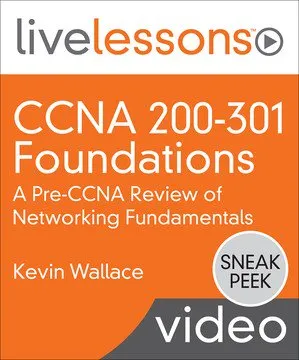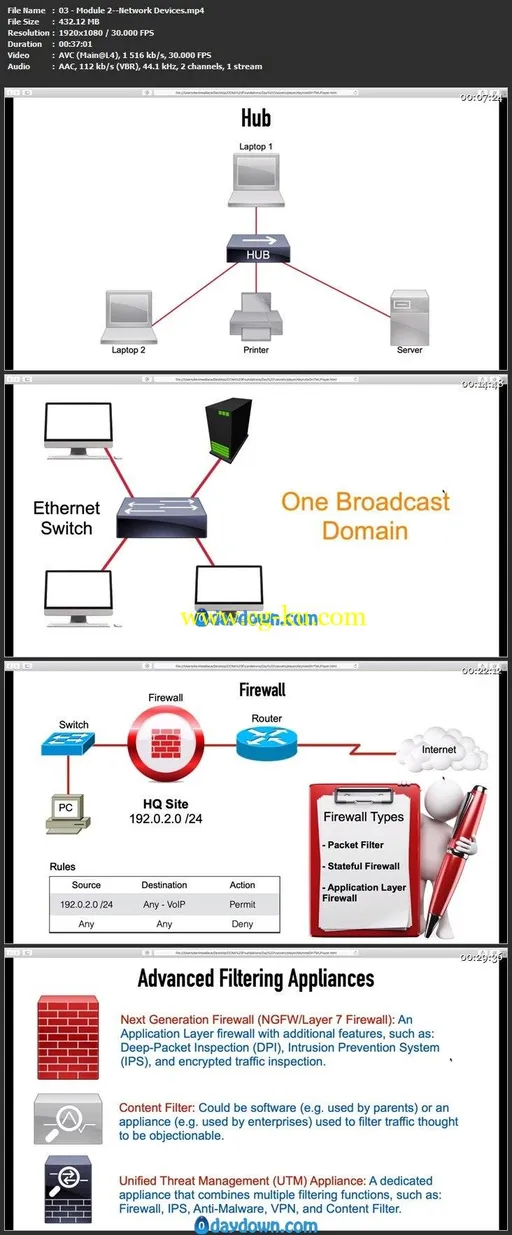MP4 | Video: AVC 1920×1080 30fps | Audio: AAC 44KHz 2ch | Duration: 12hGenre: eLearning | Language: English | Size: 7,54 GBThe Sneak Peek program provides early access to Pearson video products and is exclusively available to Safari subscribers.
Content for titles in this program is made available throughout the development cycle, so products may not be complete, edited, or finalized, including video post-production editing.
12+ Hours of Video InstructionOverviewEven though the CCNA certification is an associate level program, exam candidates are expected to have a basic knowledge of IP addressing, knowledge of networking fundamentals, and some experience deploying and managing Cisco solutions.
CCNA 200-301 Foundations LiveLessons provides you with the pre-requisite knowledge needed to begin your CCNA exam preparation.
Assuming no previous knowledge, this comprehensive networking fundamentals course covers the theory and operation of multiple networking technologies, all designed to lay a strong foundation for your CCNA studies and beyond.
About the InstructorKevin Wallace, CCIEx2 (Route/Switch and Collaboration) #7945 With Cisco experience dating back to 1989, Kevin has been a Network Design Specialist for the Walt Disney World Resort, a Network Manager at Eastern Kentucky University, an instructor for Cisco Learning Partners, an author of multiple Cisco Press books, and a Distinguished Speaker at Cisco Live.
Currently, Kevin owns and operates Kevin Wallace Training, LLC (kwtrain.
com), a provider of self-paced training materials that simplify computer networking.
Skill LevelBeginnerLearn How ToIn this course, you’ll learn the fundamentals of networking, to get you prepared to begin your Cisco CCNA studies.
Specifically, you’ll learn the basics of the following topics: protocols and reference models, network devices, network topologies, network services, WAN technologies, cables and connectors, Ethernet switches, wireless networking, network addressing, routing, unified communications, cloud and virtualization, network security, network monitoring and management, high availability, and quality of service.
Who Should Take This CourseThis course is designed for anyone wanting to work towards their Cisco CCNA certification that has less than two years of networking experience.
Course RequirementsSince this is an introductory level course, there are no prerequisites.
Lesson descriptionsProtocols and Reference Models: In this lesson, you’ll learn about commonly used network protocols and how they fit into the OSI Model.
Network Devices: In this lesson, you’ll learn about the operation of network devices such as routers, switches, and firewalls.
Network Topologies and Categories: In this lesson, you’ll learn about ways to categorize networks based on size and where resources are located.
Network Services: In this lesson, you’ll learn about network services such as DHCP, DNS, NAT, NTP, and SDN.
WAN Technologies: In this lesson you’ll learn about options for WAN connectivity, such as MPLS, PPP, and cellular.
Cables and Connectors: In this lesson, you’ll learn about various copper and fiber optic cables used for interconnecting network devices, along with the connectors used on various types of media.
Ethernet Switches: In this lesson, you’ll learn about the operation of an Ethernet switch, in addition to more advanced concepts including Spanning Tree Protocol and EtherChannel.
Wireless Networks: In this lesson, you’ll learn about various wireless network design options, antenna selection, channel selection, and common wireless standards.
Network Addressing: In this lesson, you’ll learn about IPv4 subnetting and the various types of IPv6 addresses.
Routing: In this lesson, you’ll learn the theory of routing and look at multiple routing protocols, including: RIP, OSPF, EIGRP, and BGP.
Unified Communications: In this lesson, you’ll learn how the spoken voice is digitized and transmitted across a network, along with a look at video transmission.
Cloud and Virtualization: In this lesson, you’ll learn about virtualized devices and options for accessing those devices via a cloud provider.
High Availability: In this lesson, you’ll learn about redundancy and disaster recovery options that can help reduce network downtime.
Quality of Service: In this lesson, you’ll learn how various quality of service mechanisms can treat various traffic types differently, based on business needs.

